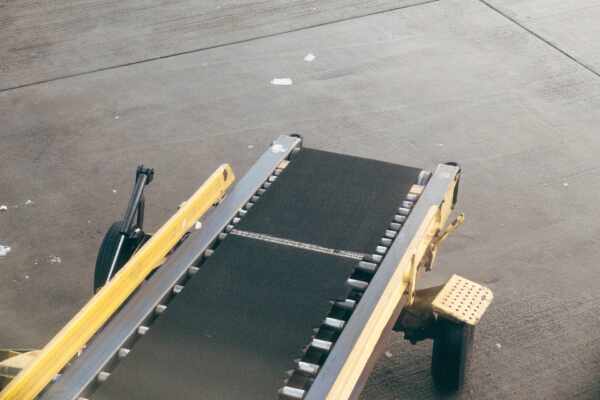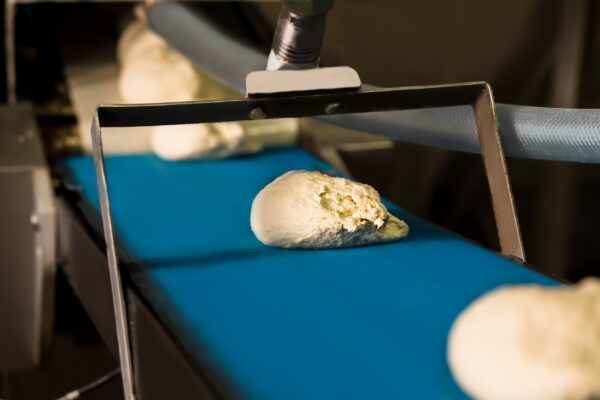In the fast-paced and highly competitive world of food manufacturing, productivity and efficiency are essential for success. A significant factor influencing these aspects in your facility is the design of your conveyor belt system. As the backbone of your production line, your conveyor belt system’s design can significantly impact the overall efficiency, output and, ultimately, profitability of your food manufacturing operation.
In this informative guide, we’ll take a closer look at how conveyor belt design can affect productivity within your food manufacturing facility. By understanding the design features, materials, and configurations that can impact your conveyor system’s efficiency, you’ll be better equipped to make informed decisions that lead to increased output and improved cost-effectiveness.
We’ll explore various conveyor belt types, such as steel belts, modular belts, and fabric belts, and delve into the intricacies of each design and how they can contribute to heightened efficiency in different food manufacturing applications. Additionally, we’ll cover essential considerations, such as proper belt selection, regular maintenance, and system adaptability, to ensure your facility remains competitive and maintains high levels of productivity.
By the end of this guide, you’ll have comprehensive knowledge on how the design of your conveyor belt system significantly impacts food manufacturing productivity and how to optimise your current system or select a new one that aligns with your facility’s specific needs. And when it’s time to invest in higher productivity, expert opinion from trusted suppliers like Change Parts Pty Ltd can help you make informed decisions that enhance your facility’s efficiency.
Maximising Efficiency in Food Manufacturing: How Conveyor Belt Design Impacts Productivity
Understanding Conveyor Belt Designs
Each conveyor belt design offers unique advantages that, when matched to a specific food manufacturing application, can significantly optimise productivity. Here, we’ll explore the different conveyor belt types and their key features:
1. Steel belts: Known for their robust construction and durability, steel belts are ideal for heavy-duty applications, such as handling large, heavy products and operating in high-temperature environments. Their strength and resilience contribute to increased efficiency by minimising belt wear and extending the system’s lifespan.
2. Modular belts: Built with interlocking plastic modules, modular belts offer great flexibility, allowing for easy adjustments and customisation. This adaptability makes them ideal for various applications, including irregular product shapes, sizes, and weights. Their low friction design also increases efficiency as they require less energy to operate.
3. Fabric belts: Comprising woven materials, fabric belts provide a lightweight, versatile solution for many food manufacturing processes. They can be customised with coatings and textures to enhance grip and prevent product slippage, enhancing performance and productivity.
Design Considerations That Impact Productivity
Several design considerations can impact the productivity and efficiency of your food manufacturing facility’s conveyor belt system:
1. Proper Belt Selection
Selecting the appropriate belt design and material for your specific application is crucial for achieving maximum efficiency. Consider factors such as product weight, shape, size, moisture content, and operating temperature when choosing the best belt for your facility. Proper belt selection ensures smooth product handling, reduced wear, and minimal system interruptions.
2. System Configuration and Layout
A well-designed conveyor belt system optimises space utilisation within your facility, resulting in a streamlined production process. Consider the layout and configuration of the entire system, including the incorporation of curves, inclines, declines, and merges, to facilitate product flow and reduce bottlenecks, contributing to increased efficiency.
3. Regular Maintenance and Inspection
Keeping your conveyor belt system in top condition is essential for maintaining productivity in your food manufacturing facility. Establish a regular maintenance schedule to inspect belts for wear, damage, or alignment issues, and replace or repair components as necessary. By ensuring your system operates smoothly, you minimise downtime and maintain high levels of productivity.
4. System Adaptability
Food manufacturing processes can change and evolve over time. Your conveyor belt system should be easily adaptable to accommodate new product lines, increased processing speeds, or alterations in production requirements. Designing your system with modularity and flexibility in mind allows for easy reconfiguration and responsiveness, ensuring ongoing productivity and efficiency.
Boosting Food Manufacturing Efficiency with Conveyor Belt Solutions
To maximise food manufacturing efficiency, consider these strategies for choosing and optimising your conveyor belt system design:
1. Match Your Belt Design with Your Specific Application
It’s essential to select a conveyor belt design that caters to the unique needs and requirements of your food manufacturing process. For example, when operating in high-temperature environments, steel belts may be most suitable due to their heat resistance and durability.
2. Emphasise Adaptability and Modular Design
When designing your conveyor belt system, consider incorporating modular components and prioritising adaptability. This approach allows for easy adjustments or expansion as your production requirements change, maintaining efficiency and productivity in the long run.
3. Regular System Maintenance and Inspections
To keep your conveyor belt system operating at peak performance, schedule regular inspections and maintenance. Swiftly addressing mechanical issues, wear, or alignment problems reduces downtime and keeps productivity on track.
4. Consult with Conveyor Belt System Experts
If you’re unsure which conveyor belt design is best suited for your food manufacturing facility, consult with experienced professionals like the team at Change Parts Pty Ltd. With extensive expertise in conveyor system design, they can help you determine the perfect solution for your unique process requirements.
Conclusion
By understanding the importance of conveyor belt design in the realm of food manufacturing efficiency and productivity, you can make informed decisions to improve your production process. With the right conveyor belt design in place, tailored to your specific application, you can streamline production, reduce downtime, and maintain the highest food safety standards. Consulting with industry experts and exploring the range of solutions available to you is crucial in making the best choices for your food manufacturing facility.
Ready to optimise productivity in your food manufacturing facility through the perfect conveyor belt system design? Turn to Change Parts Pty Ltd for expert advice, quality products, and tailored support that will elevate your production process to new heights and revolutionise your efficiency.




